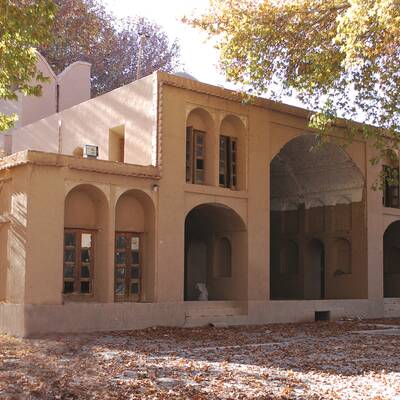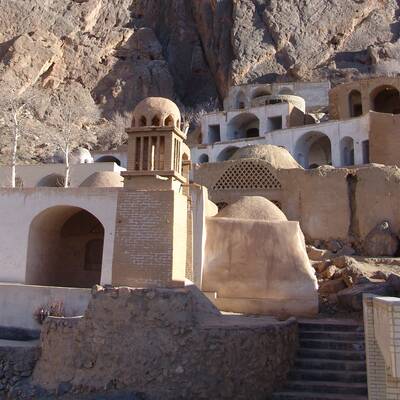
Pahlavanpour Garden and Ethnography Museum of Mehriz
Pahlavanpour Garden is one of the Persian gardens inscribed on the UNESCO World Heritage List. With an area of over five hectares, it includes a clay tower along with its related service spaces, Sharbatkhaneh (Koushk) at the center, Winter house and gatekeeper’s house.
The most valuable part of garden is the Koushk mansion or drink house in three floors in an area of 1500 square meters. Kolah Farangi mansion has been decorated with a delicate Karbandi and it is one of the precious parts of Sharbatkhaneh (Drink House). Based on the rule of the construction of Persian gardens, this mansion is placed along the main axis of the garden. The ever-flowing ditch of this garden which is watered by the global Hasan Abad Qanat in Mehriz and plane trees grown along the ditch define the main axis of the garden. The intersection of garden and Qanat is the main reason of this place to be included in the UNESCO list with two internationally inscribed monuments.
A part of this beautiful garden has been turned into the ethnography museum of the city. In addition to displaying ethnographic objects related to the culture and local costumes, different Moulages of traditional jobs, etc. as well as several ancient objects related to Parthian civilization which were discovered in archaeological excavations are also on display in the museum.
Objects on Display in Museum
In total, more than 400 objects including tools and equipment of the traditional occupations, metal and glass containers for cooking serving food, ancient inscriptions and reliefs, old documents and deeds, traditional clothing of the region, bathroom accessories and also weapons are exhibited in the museum.






